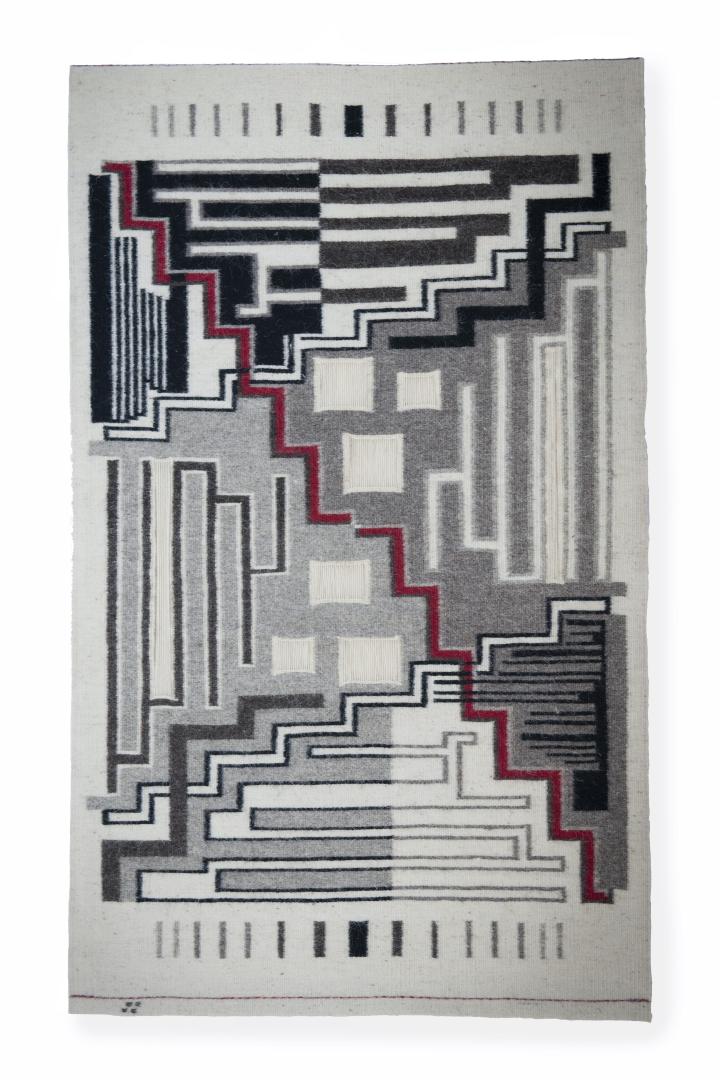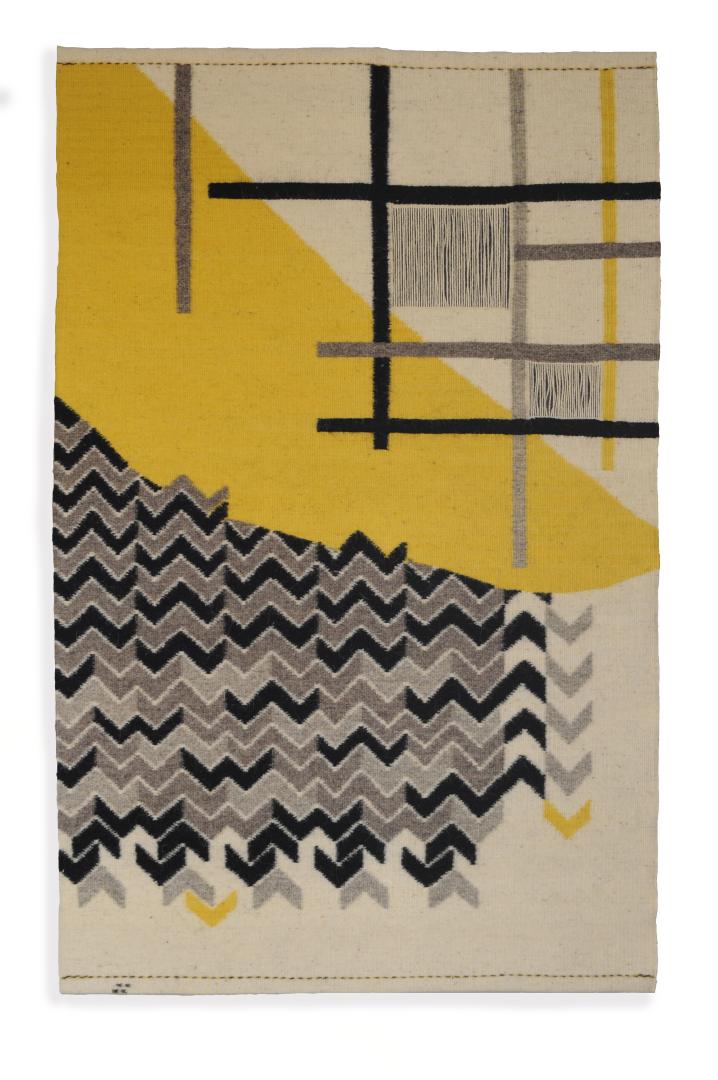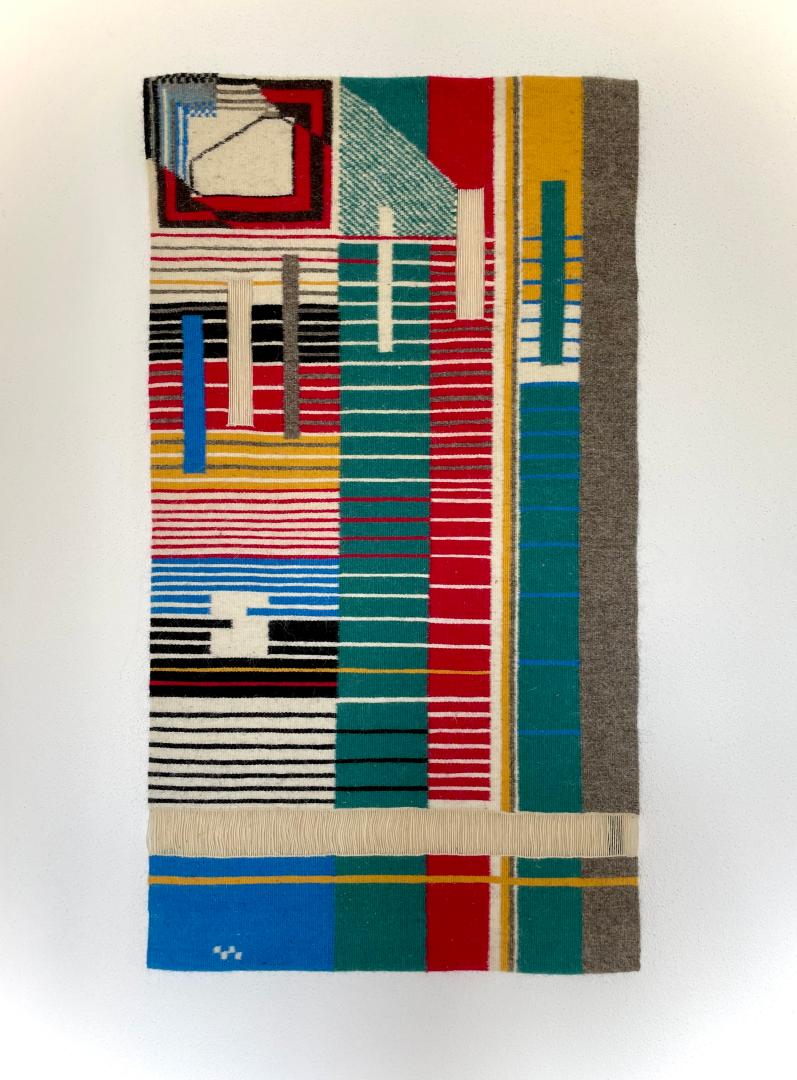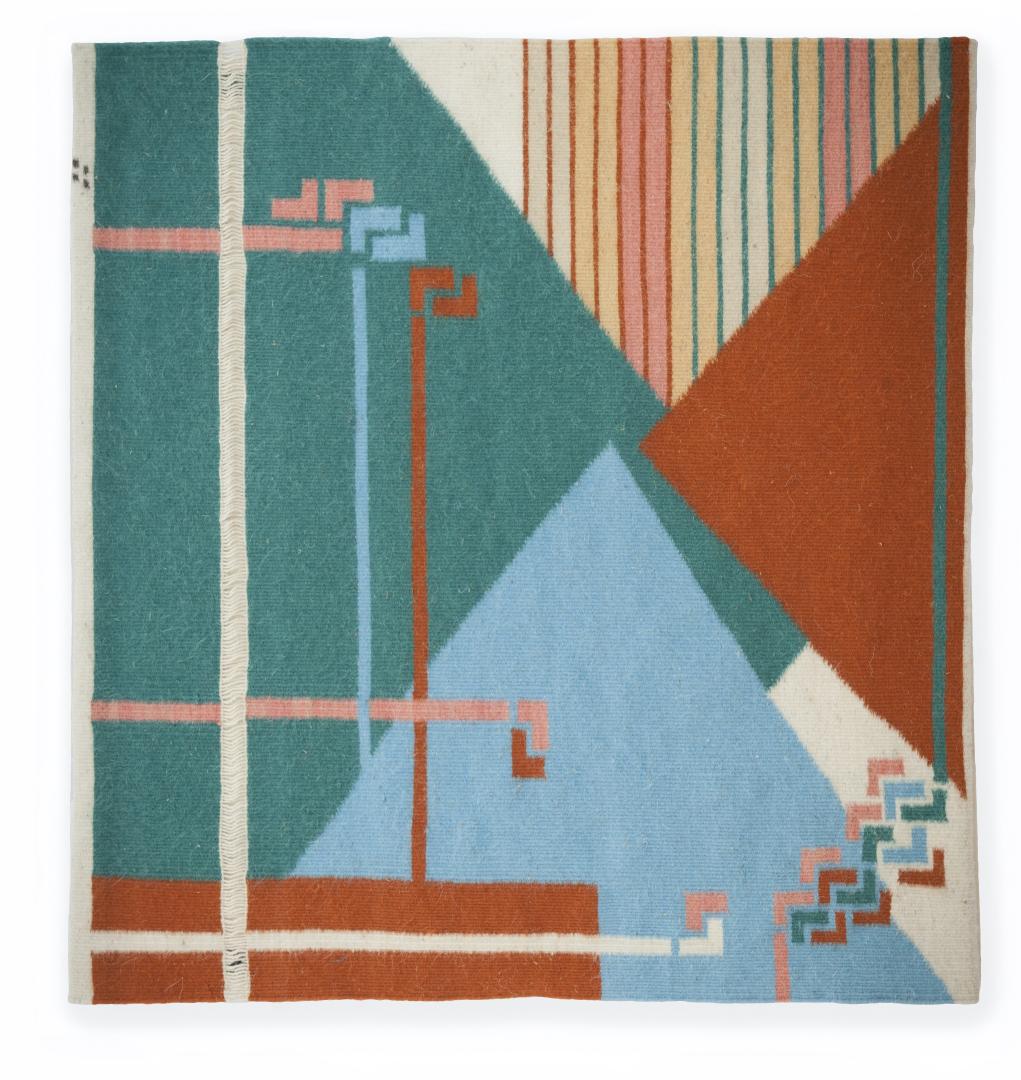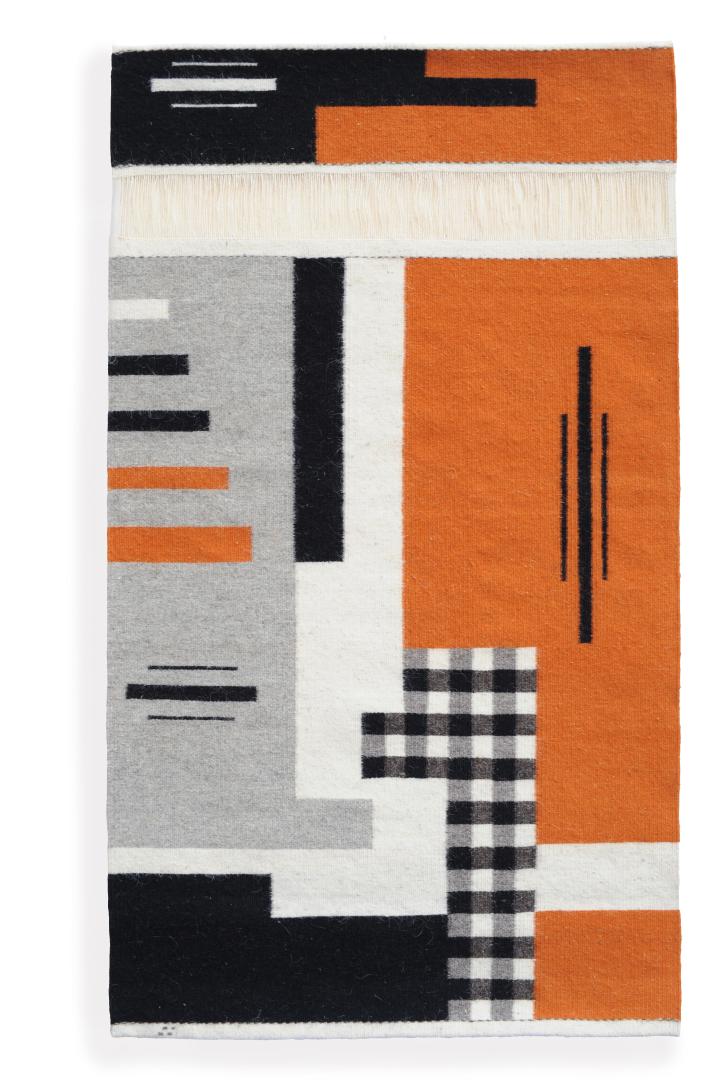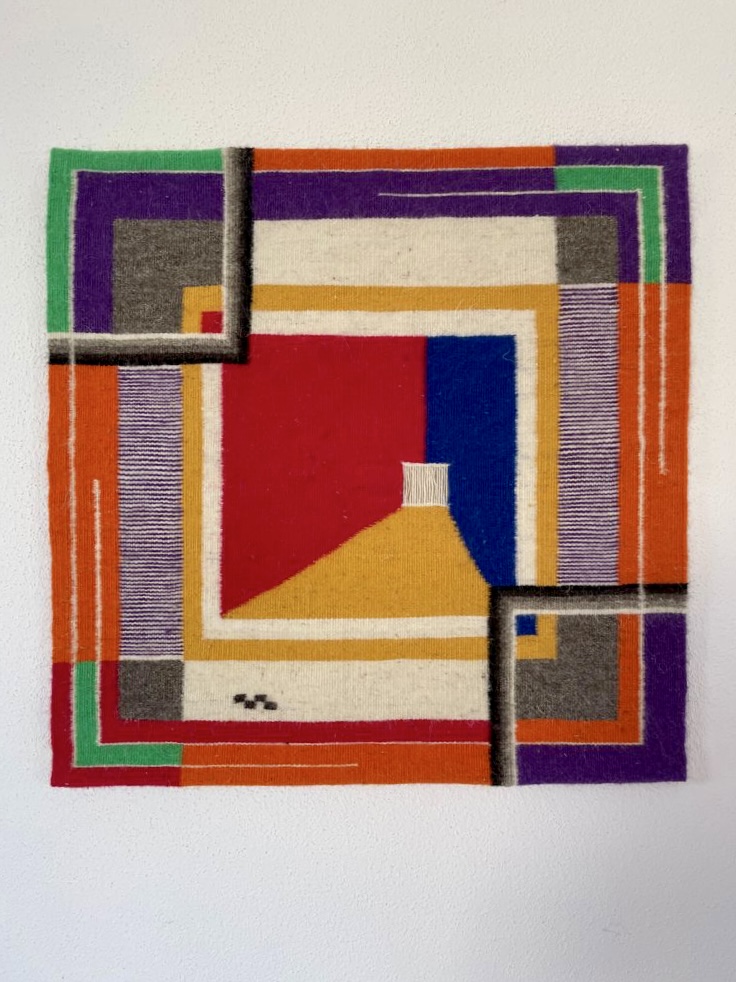“Hanging by a Thread”
Basic information
Project Title
Category
Project Description
A handful of women during the first lockdown: a few weavers with their ancient looms, some designers with their contemporary inspirations. A time of loneliness, silence, reflection. When the world experiences an unprecedented break, they experiment a new approach to their manufacture. While the purest and most essential part of our lives emerges demanding new spaces, the soul of the tapestry reveals itself becoming a protagonist for the first time. A return to the essential, for a new beginning.
Geographical Scope
Project Region
Urban or rural issues
Physical or other transformations
EU Programme or fund
Which funds
Description of the project
Summary
While the world was experiencing an unprecedented break due to the pandemic, an inter-generational group of women experimented on traditional crafts.
On the one hand, a handful of Sardinian weavers – last custodians of centuries-old tradition – who kept an extremely rare and fully manual technique with standing loom, taught as children and passed down through generations, women-to-women. On the other hand, a team of sophisticated and eclectic designers who reinterpreted this ancient tradition with an ultramodern artistic glance.
Their cooperation began under the name of Pratha (Sardinian word meaning “square”) with the ultimate goal of saving this precious weaving technique from the extinction through design innovation: but it was during the global lockdown that they felt the need to go a step further and bring something new to their crafting technique too. They wanted to translate into tapestry the fears and the hopes of those challenging times; they wanted their artworks to reflect the silent mystique of our empty streets, the loss of orientation in our lonely days; they wanted to materialise the sensation of being “hanging by a thread”.
This new creative and experimental phase led to the realization of a series of deconstructed tapestries, unique pieces characterised by the presence of “naked parts” where the weave is interrupted and the warp becomes visible. The deconstruction of the art-crafts symbolises the stalemate affecting society and individuals: our lives are suspended, waiting to resume the journey to build the present and future, ready to intertwine again like patterns on a loom. During this intimate time for reflection, the soul, the purest part of our life, emerges and claims its space, just like the soul of the tapestry which reveals itself and becomes a protagonist. The present is the visible warp, a thread of continuity between yesterday and tomorrow, when life will resume where it stopped, with new balances to be built…
Key objectives for sustainability
With this project, we propose a sustainable model of art: from the choice of raw material, that is a virtuous example of circularity, to the whole production process, having a positive impact on the environment. On top of that, it is important to highlight the geographical dimension of the project: the raw material is 100% local, and the tapestries are entirely realised in Sarule, small village in the heart of Sardinia.
Sheep are still sheared manually with the utmost care, ensuring the best animal welfare. No chemical product is used: tapestries are made of wool which is either in the natural colours of Sardinian sheep – black, grey, brown and white - or coloured following the ancient tradition of dyeing naturally from herbs.
The preparation for weaving is also fully manual, as well as the executive phase: both warp and fill are prepared by hand; once ready, the weavers work at a traditional standing (vertical) handloom, with no mechanic tools or other non-manual supports (such as pedals), adhering faithfully to the ancient technique.
In the age where art tends to follow the logic of unsustainable consumerism, in line with the current consumer culture and fast economy, this project is an example of slow art with a positive impact on the planet.
Key objectives for aesthetics and quality
The project “Hanging by a thread” was conceived and realised in full pandemic emergency: during the most difficult moments for Europe in recent times, we felt the need to let that situation inspire us. We were apart, but this creative momentum made us closer than ever: in spite of the silence, the loneliness, the immobility, we felt urged to stay connected to create beauty, as a response to the many questions raised by the global events.
Our inspiration embraced the influence of twentieth-century minimalist avant-gardes, starting from Bauhaus, by means of clean and essential lines: a return to the essential, for a new beginning.
The core idea of deconstructing the tapestry through sections or windows of visible warp was a conceptual translation of the emotions overwhelming us, when we all felt like our lives were “hanging by a thread”:
- It's the stalemate affecting society and individuals, with our lives suspended: the present is the visible warp, a thread of continuity between yesterday and tomorrow, when life will resume where it stopped, but with new balances to be built.
- It is the vulnerability that our social systems are suddenly exposed to: we feel naked, weak, and during this intimate time for reflection, the soul, the purest part of our life, emerges and claims its space, just like the soul of the tapestry which reveals itself and becomes a protagonist.
- It’s an open bound: we all lost something, or someone. Moments, opportunities, loved ones. The wound will close up, but we will be scarred.
- It’s a message of hope: there is space between the hanging threads, where light can pass through, leading us out of the darkness.
Overall, it’s a transition towards a better future: this project talks about nowadays changes and challenges, but it's framed within the universal and timeless objective of creating, promoting and sharing beauty. That’s the Europe we want: a place where we see beautiful things around us, to be inspired to build the change.
Key objectives for inclusion
“Hanging by a thread” is an inclusive project based on intergenerational dialogue, where role of the elderly and role of women are two pillars: it was conceived, developed and made possible thanks to the cooperation of a team of women aged between 30 and 90.
On the one hand, a handful of no longer young weavers, last custodians of a centuries-old tradition: they kept an extremely rare technique with standing loom, taught as children and passed down woman-to-woman through generations.
On the other hand, a team of eclectic designers fascinated by this ancient weaving technique: with their ultramodern artistic glance, they reinterpreted and innovated the tradition connecting it with fresh and contemporary styles.
At the initiative of the younger artists, the group merged the respective skills to invest new efforts in relaunching the traditional weaving: basic techniques, materials, and instruments remain unchanged, while the aspect of the tapestries is all-new and original.
This project becomes a virtuous example of active aging, promoting the social engagement of the elderly and especially of women, whose passion and determination has saved this art from extinction.
A best practice of intergenerational and transdisciplinary participation that could be successfully implemented to many crafting productions at risk, where the dialogue between older and younger generations, with their different experiences, know-how and sensibilities can converge to save and relaunch local tradition.
Results in relation to category
The idea of regenerating the traditional crafts by creating an inter-generational bridge between this rare weaving technique and the contemporary inspirations of younger designers led to an explosion of creativity. The last craftswomen, after having weaved traditional patterns for their whole life, found a renovated enthusiasm in experimenting innovative designs and got back to weaving full-time. The whole community, that seemed resigned to see this art disappearing, rediscovered the pride of having kept and fostered it through the centuries. They felt motivated to contribute to relaunch it. Former weavers joined the team, young women showed their interest in learning.
The cross-generational and transdisciplinary approach, while promoting sustainability and circularity, has led to a new cultural ferment, arousing growing interest around this project in the contemporary art scene: despite the limitations due to the pandemic, a number of exhibitions showcased our deconstructed tapestries, and great attention is being given by the specialised press and sectorial publications too.
How Citizens benefit
Sarule is a small rural village of less that 2.000 inhabitants in the centre of Sardinia: until a few decades ago, there was a loom in almost every house. There was also an extremely lively cooperative of weavers and a dedicated weaving museum. The traditional carpets were the jewels in the crown of the local productions and among the most appreciated Sardinian art-crafts. The declining commercial interest in these works, unable to withstand the competition of serial industrial rugs produced at a low-cost, led to their progressive dismantling and most weavers also stopped regularly working. Today, the cooperative no longer exist, the museum is closed and only a few looms survive. The last weavers are aged between 70 and 90, as in the absence of a profitable market, the willingness of younger generation to learn has vanished too. As a consequence, this precious Sardinian heritage risks disappearing, and it’s survival looks like it’s “hanging by a thread”, too.
The idea of regenerating the traditional art-crafts by creating an inter-generational bridge between this weaving technique and the contemporary inspirations of younger designers led to an explosion of creativity. The last craftswomen, after having weaved traditional patterns for their whole life, took up the challenge launched by the designers, and found a renovated enthusiasm in experimenting innovative designs. Since then, they got back to weaving full-time. The whole community, that seemed resigned to see this art disappearing, rediscovered the pride of having kept and fostered it through the centuries; they felt motivated to contribute to relaunch it. Former weavers joined the team, young women showed their interest in learning, fellow citizens having unused clews spontaneously donated them to the weavers as a personal contribution to the resumption of activity.
The project has led to a new cultural ferment, arousing growing interest in the contemporary art scene, both inside Sardinia and outside.
Physical or other transformations
Innovative character
We live in the era of serial, fast, depersonalised productions, where art and design tend to also follow the logic of unsustainable consumerism. Handicrafts, which often represent our cultural and historical excellence, can’t keep up the competition of low-cost industry. In this context, where the consumer culture dominates the markets and the economy, this initiative shares with many other niche productions the feeling of being “hanging by a thread”. Nevertheless, when we started designing our project, we firmly decided to remain faithful to our know-how and to the traditional technique. We aimed to bring something new to our art-crafts, but our experimentation focused on innovative design and technical variations, without simplifying the execution.
The result is a project which is fully sustainable, in every phase. The tapestries are exclusively made of wool from Sardinian sheep, which is very difficult to process and therefore considered a waste product, with no commercial value, and poses significant disposal problems too. Nevertheless, in the cycle of weaving, Sardinian sheep wool is processed manually and fully exploited with zero waste.
Sheep are sheared manually with the utmost care, ensuring the best animal welfare. Tapestries are made of wool which is either in the natural colours or coloured following the ancient tradition of dyeing naturally from herbs.
The weaving itself is also fully manual, and has no energy impact: the weavers work at a traditional standing loom, adhering faithfully to the ancient technique. To create the sections of visible warp characterising the project “Hanging by a thread”, they manually tie yarn and warp. Due to the extreme complexity of this ancient technique, the craftswomen could only weave a few centimetres per day, and the realisation of each tapestry took several weeks/months of work. The result is a series of six exclusive unique pieces, a virtuous example of slow art with a positive impact on the planet.
Learning transferred to other parties
“Hanging by a thread” is an artistic project aimed at creating beautiful contemporary tapestries, while preserving a traditional weaving technique passed down through generation, over the centuries. It is an example of how different generations, knowhows, skills, experiences, can dialogue and integrate to develop new products and new models, without giving up the respective sensibilities. We are confident that this interdisciplinary approach could be that key to save from the extinction many crafting production of extraordinary historical, cultural and social value, that are now disappearing in Europe and in the world: like us, they are “Hanging by a thread”. We are ready to share with them our values, our experience and our best practices, possibly with a view of creating a network of historical traditional productions to be relaunched in a forward-looking perspective. A platform of sustainable and inclusive projects where classical techniques are safeguarded, where creativity has no boundaries, where people are central to the project, where local community can benefit from a higher quality of life, where the surrounding environment is respected.
A place where Tradition meets Innovation, where High craftsmanship meets Contemporary design, without conflicts: our tapestries tell a story of crafting skills passed down over the centuries, of a rural community who wants to keep a sustainable connection with the surrounding environment, and where the expert hands of old weavers meet the enthusiasm of young generations to create a better tomorrow, together.
“Hanging by a thread” is a positive example of integrating skills and pursuing forward-looking objectives, but is also an ambition: to see the European artisan excellence revitalised and promoted, as a pillar of our historical and cultural identity framed in a sustainable perspective.

